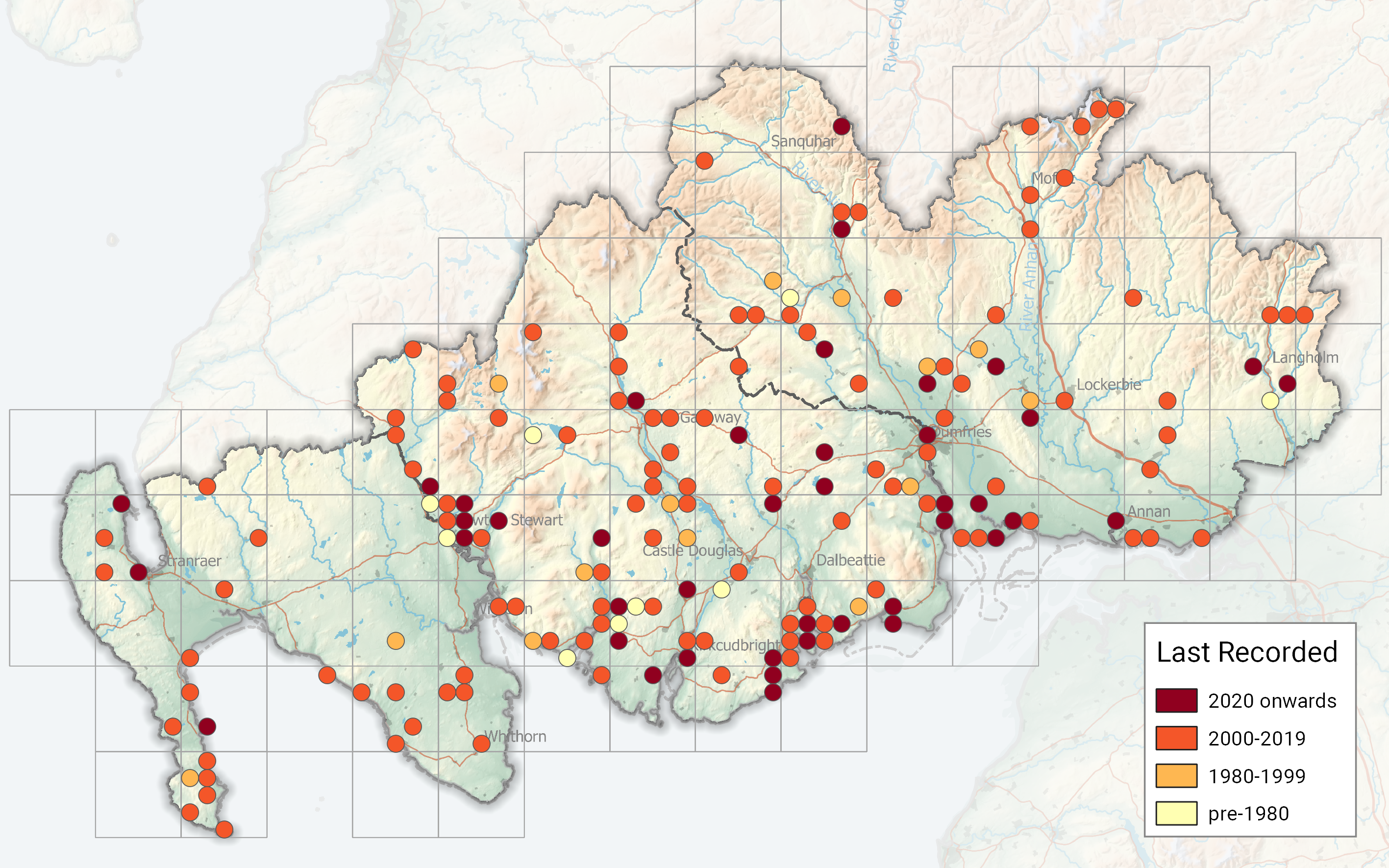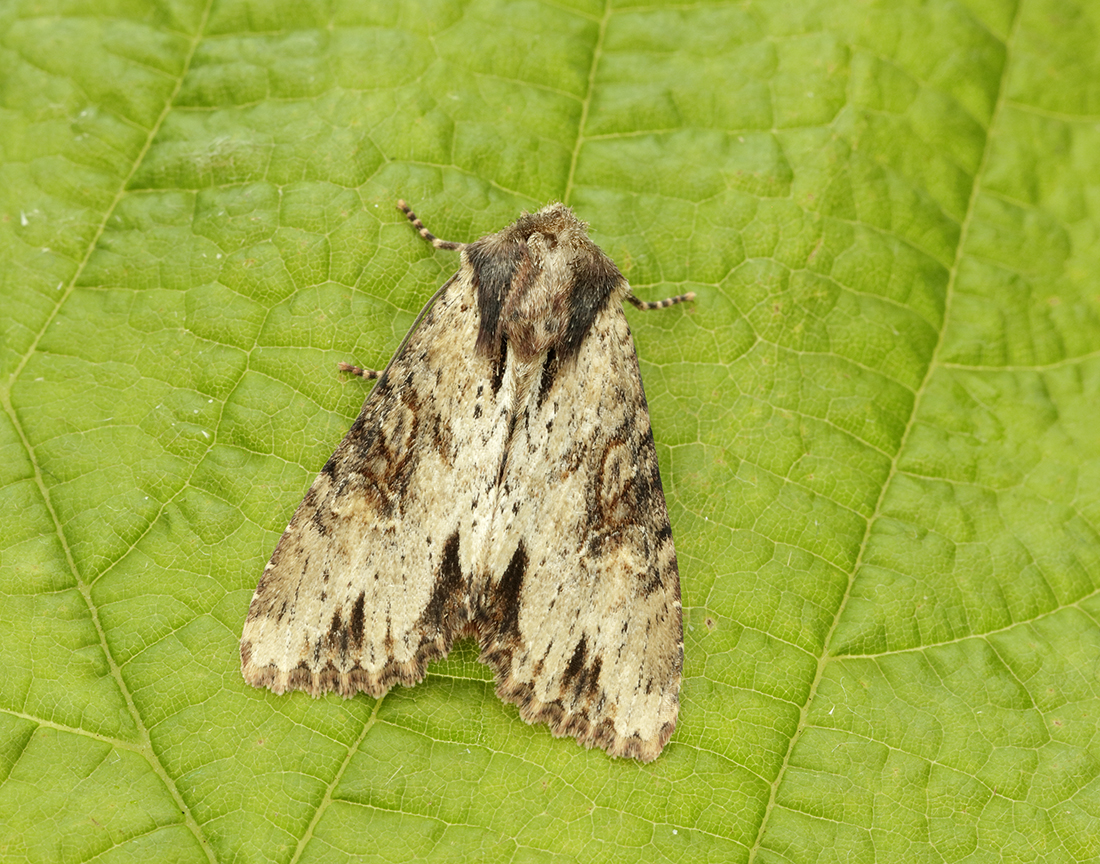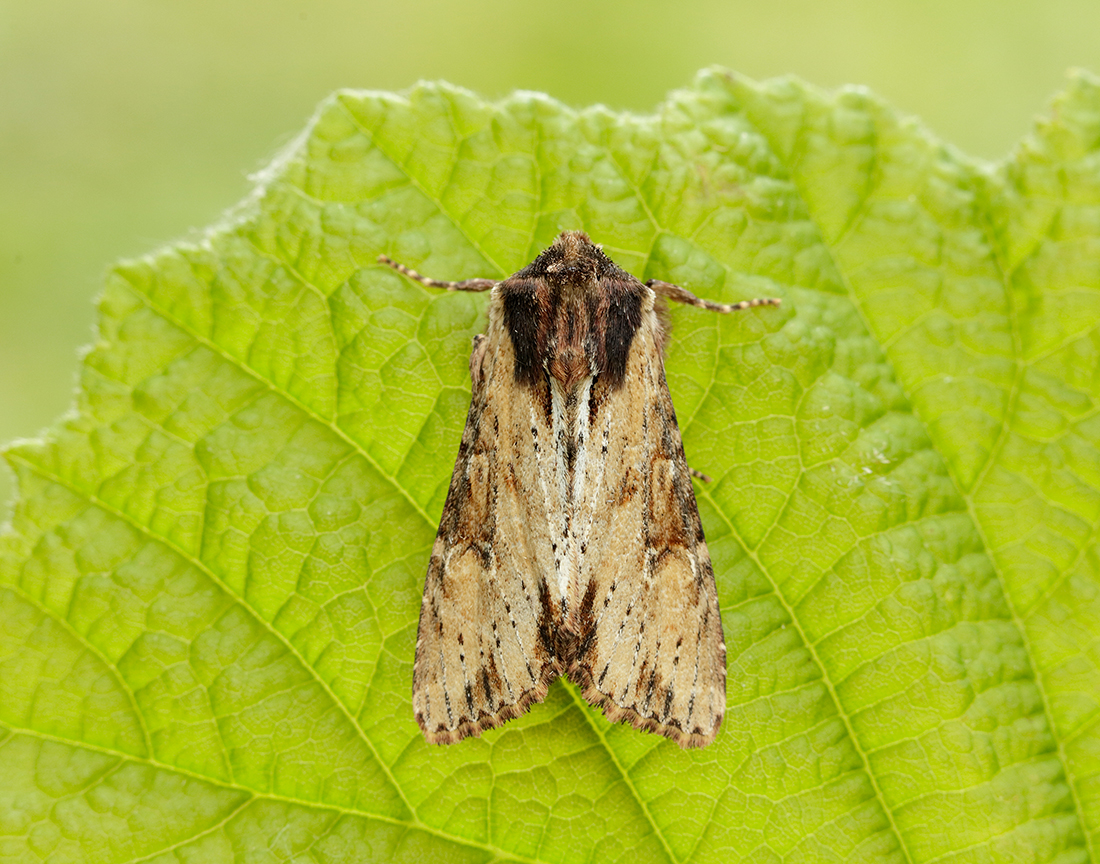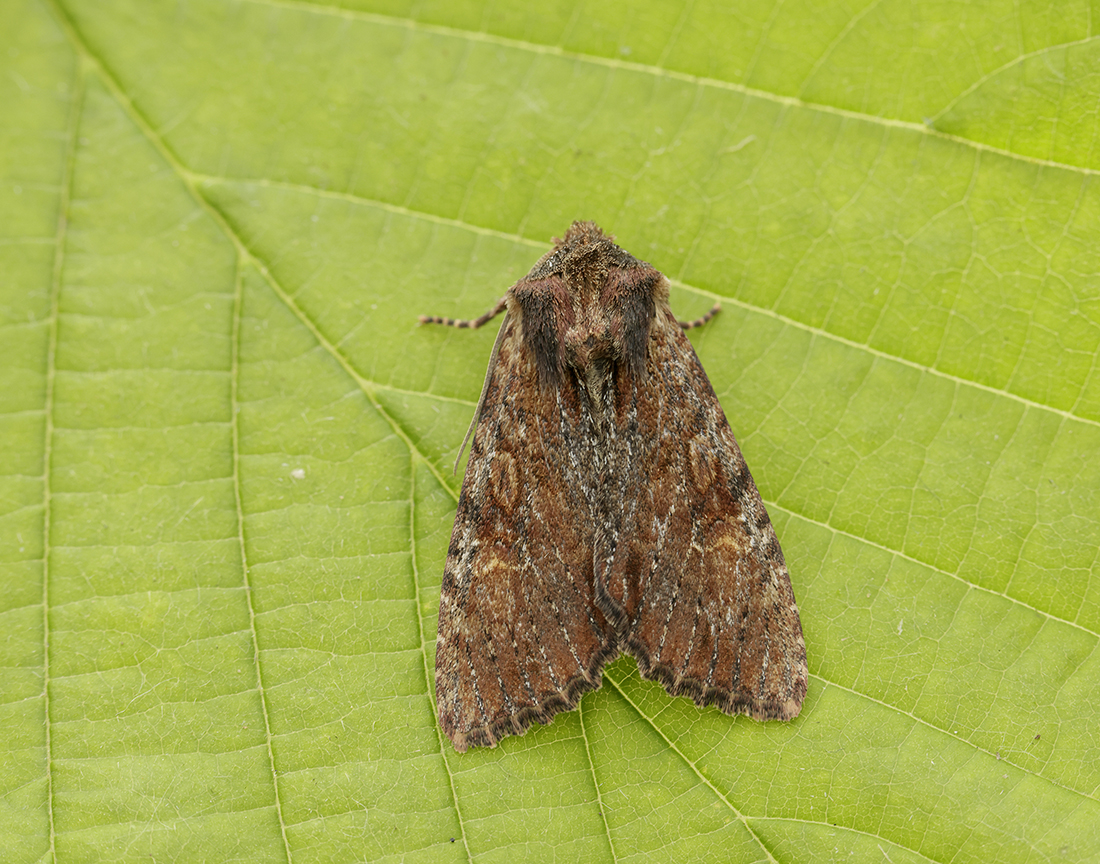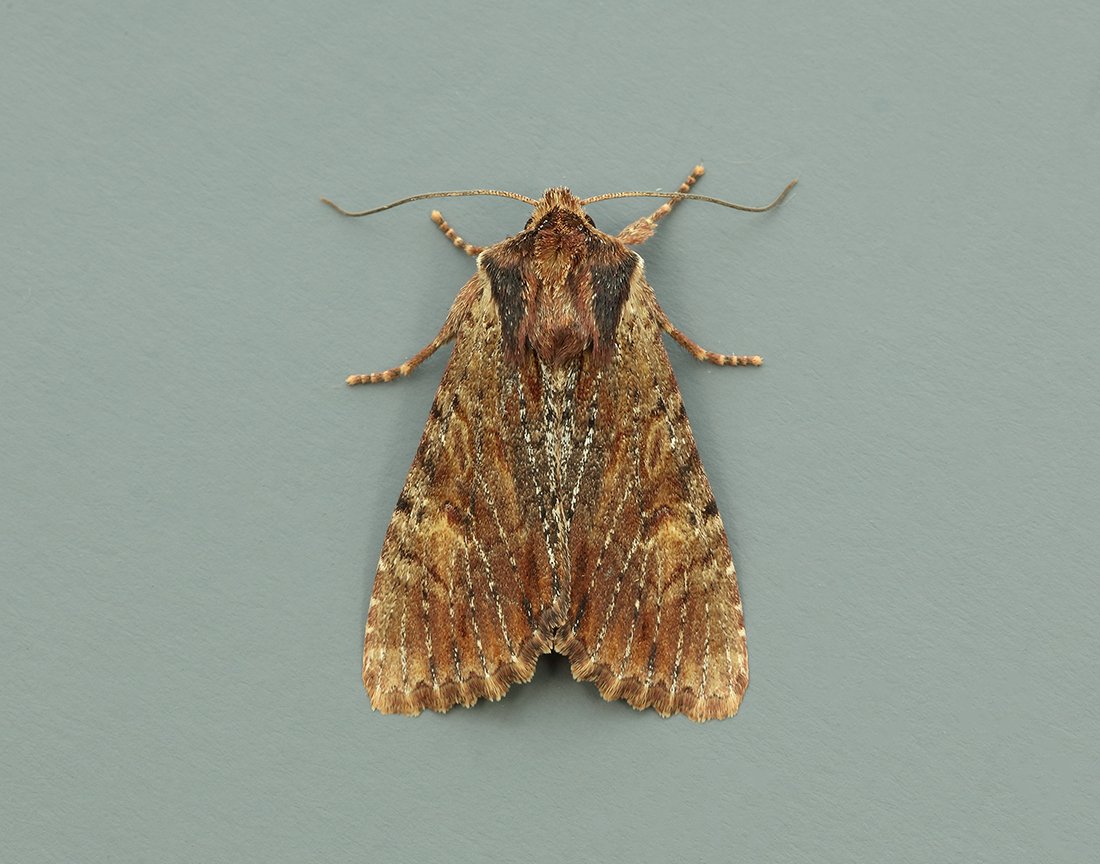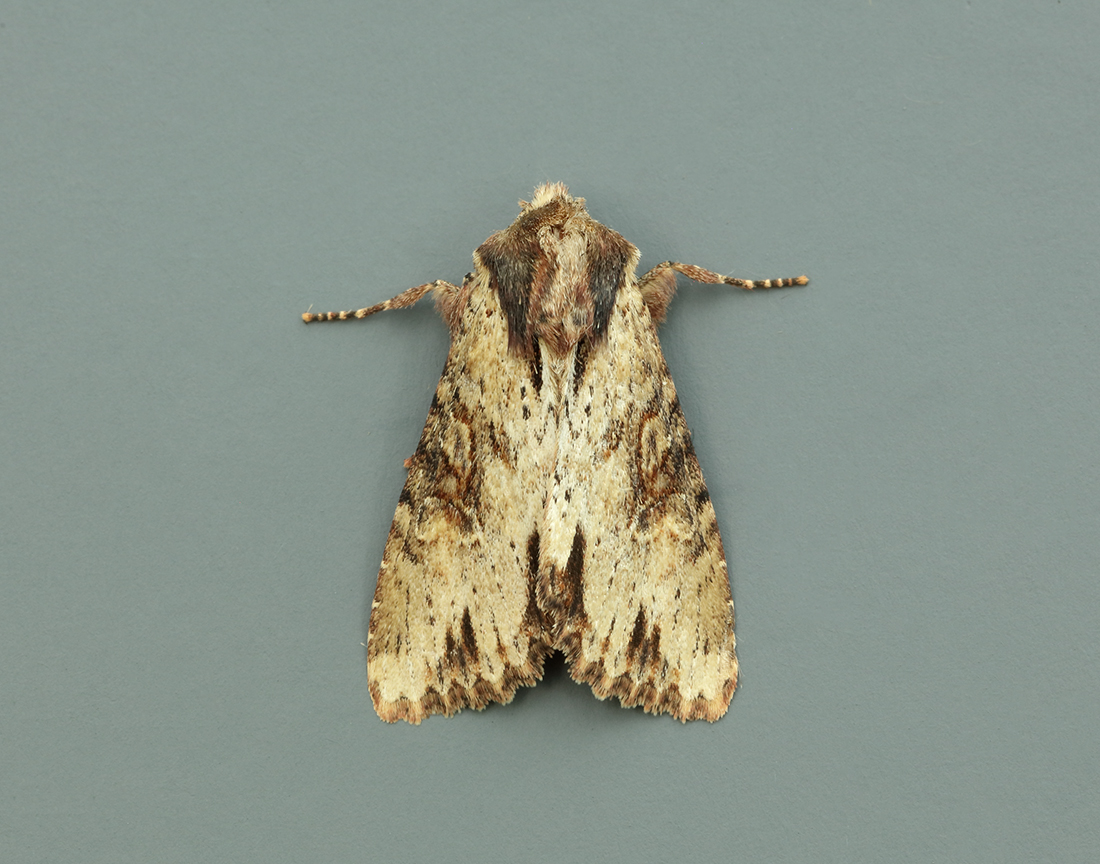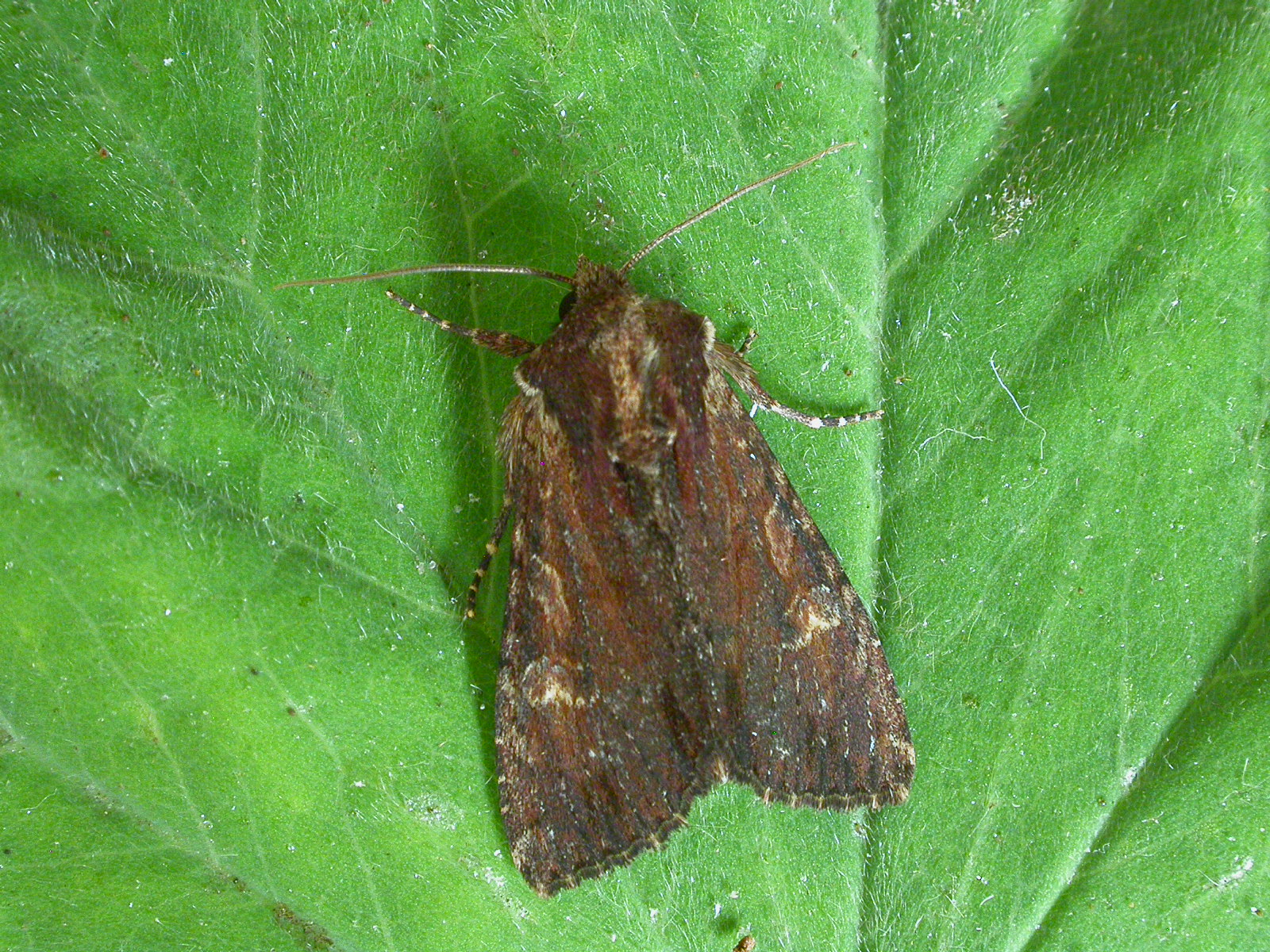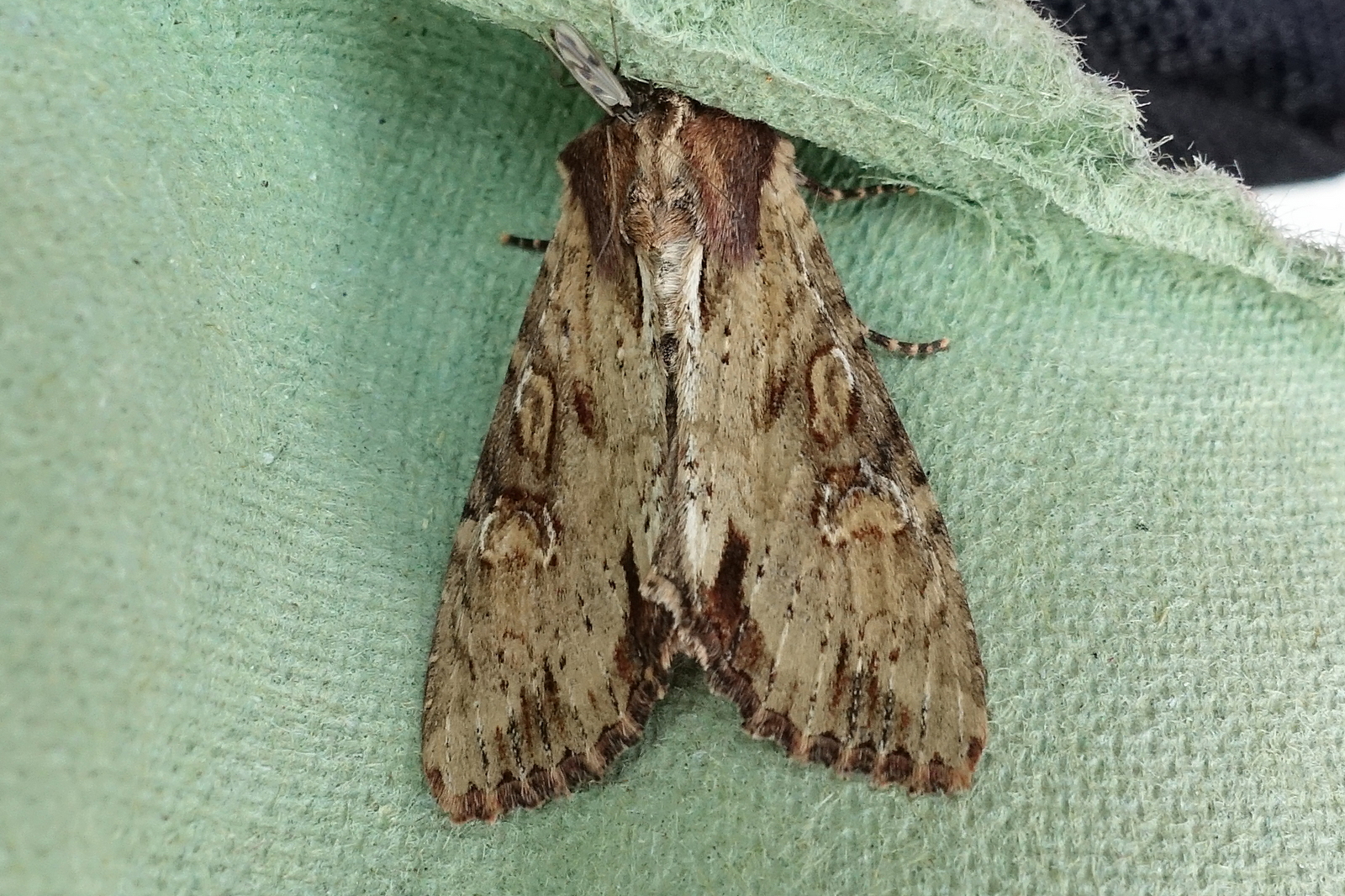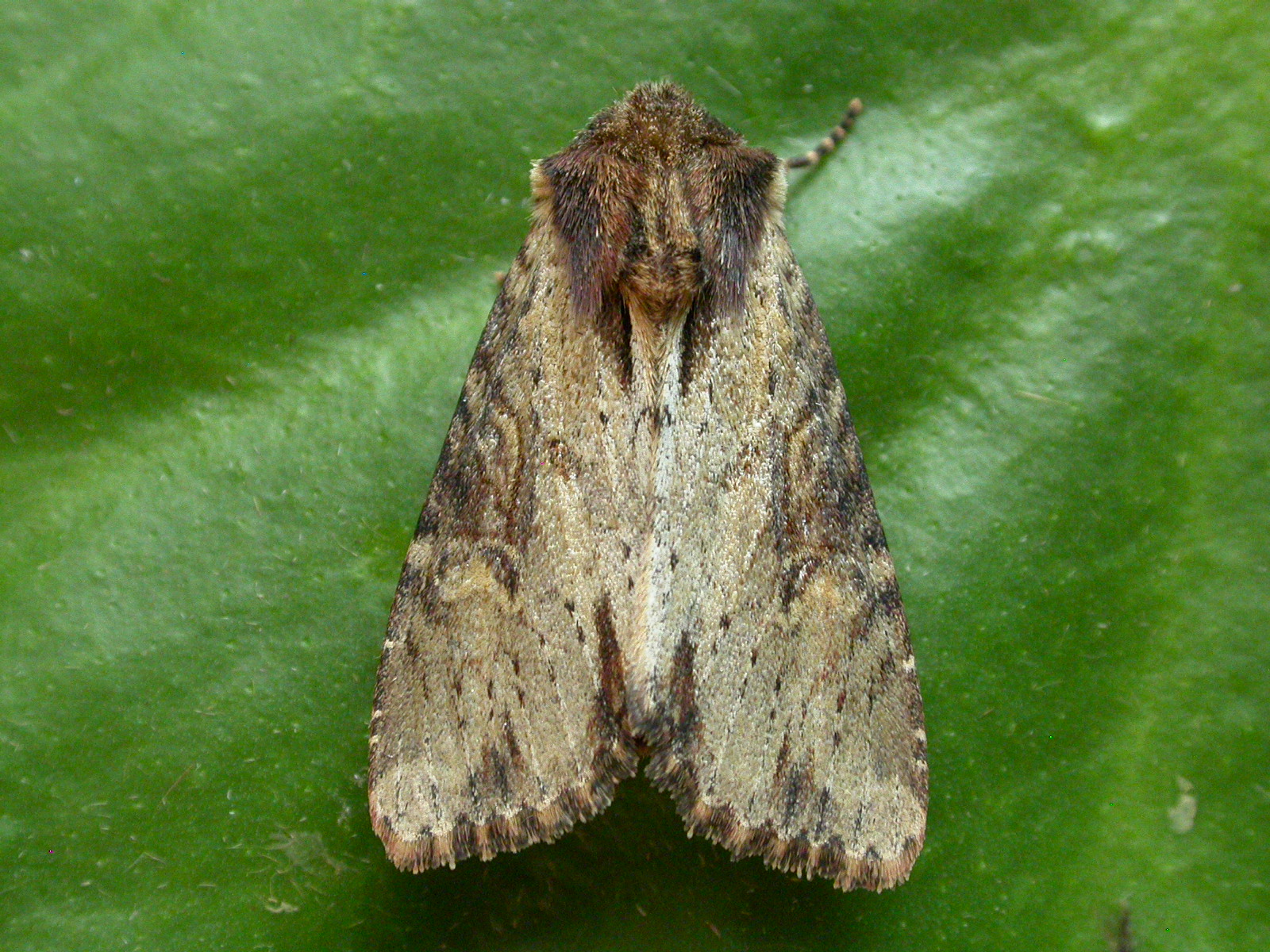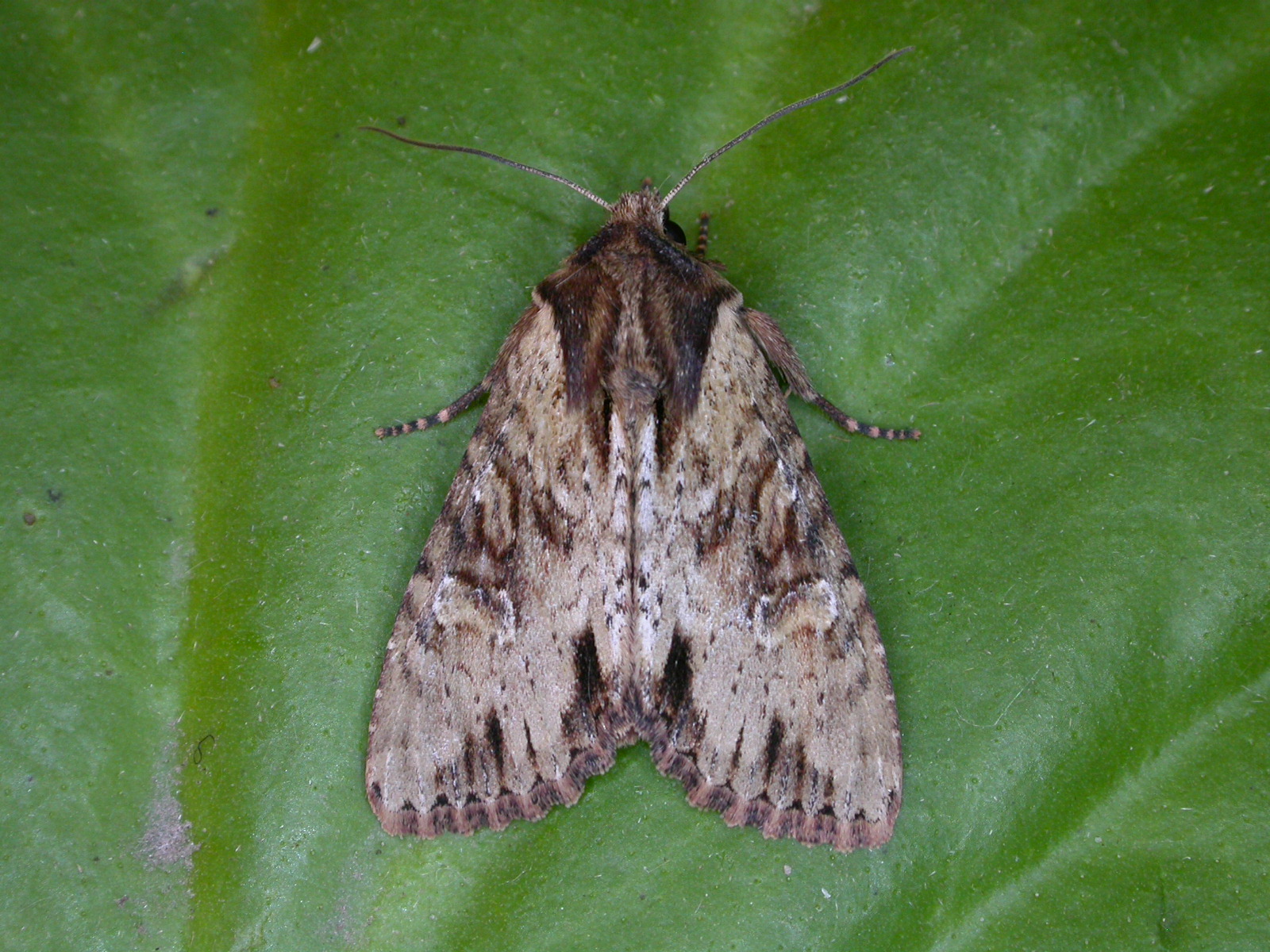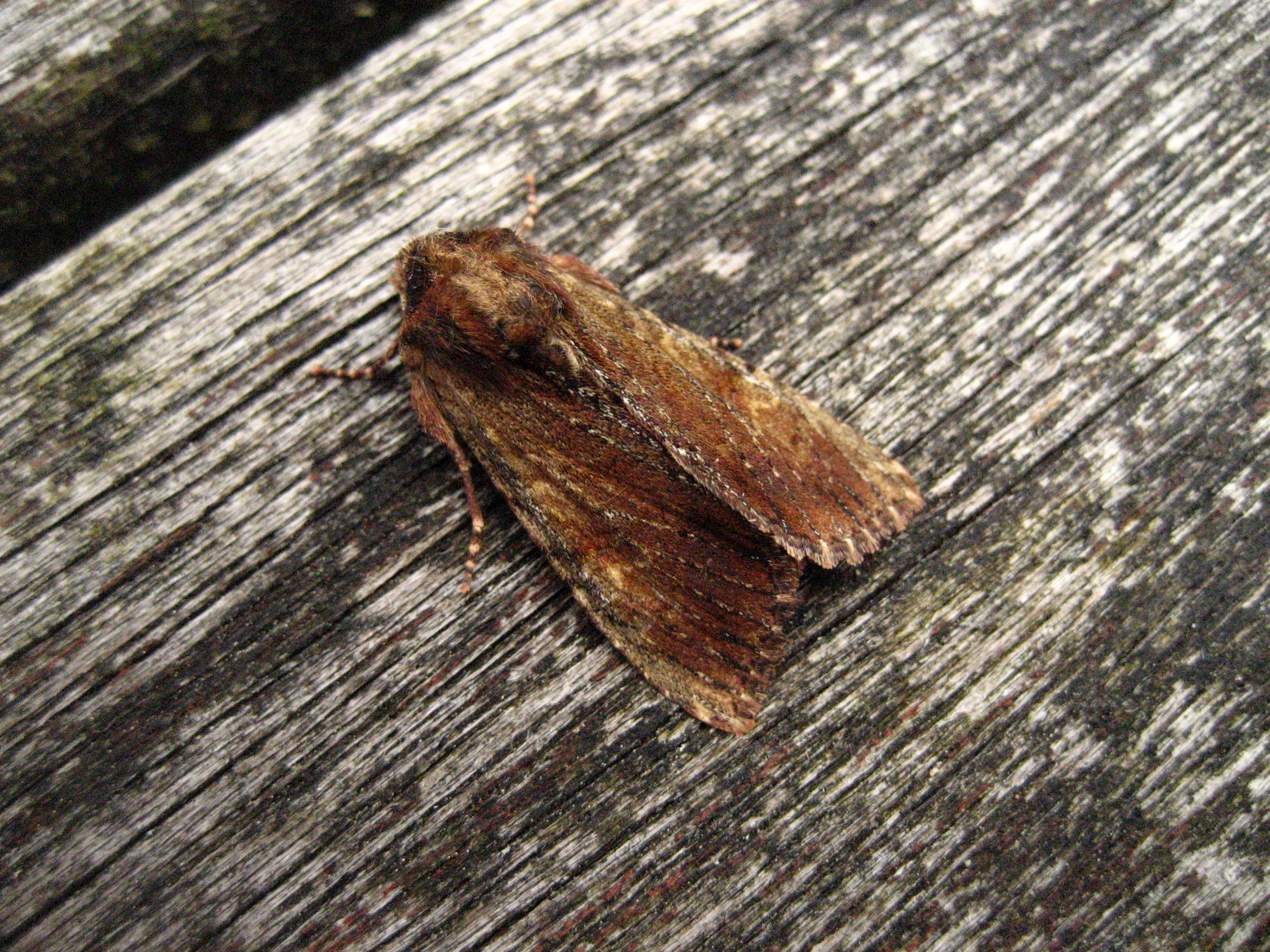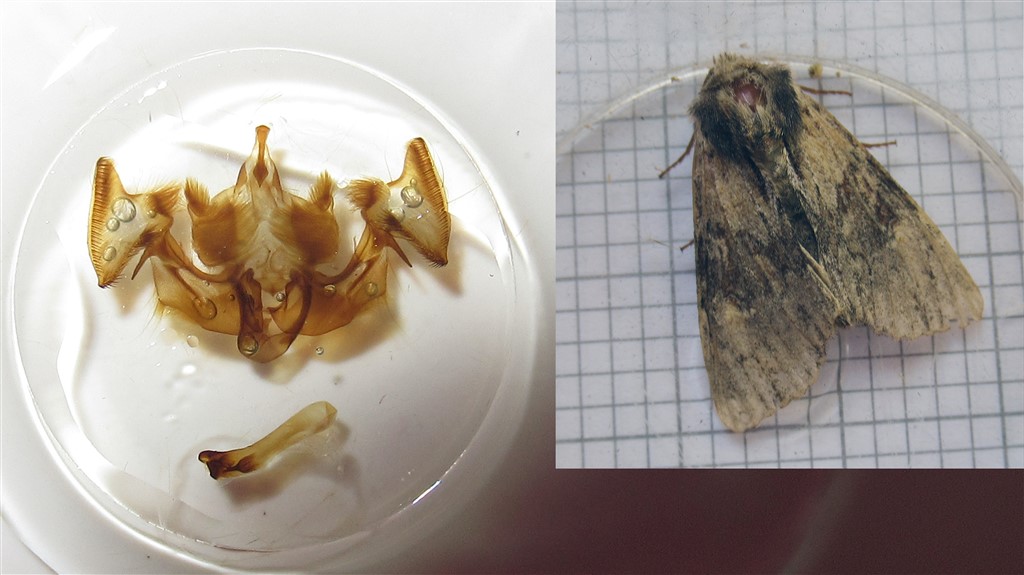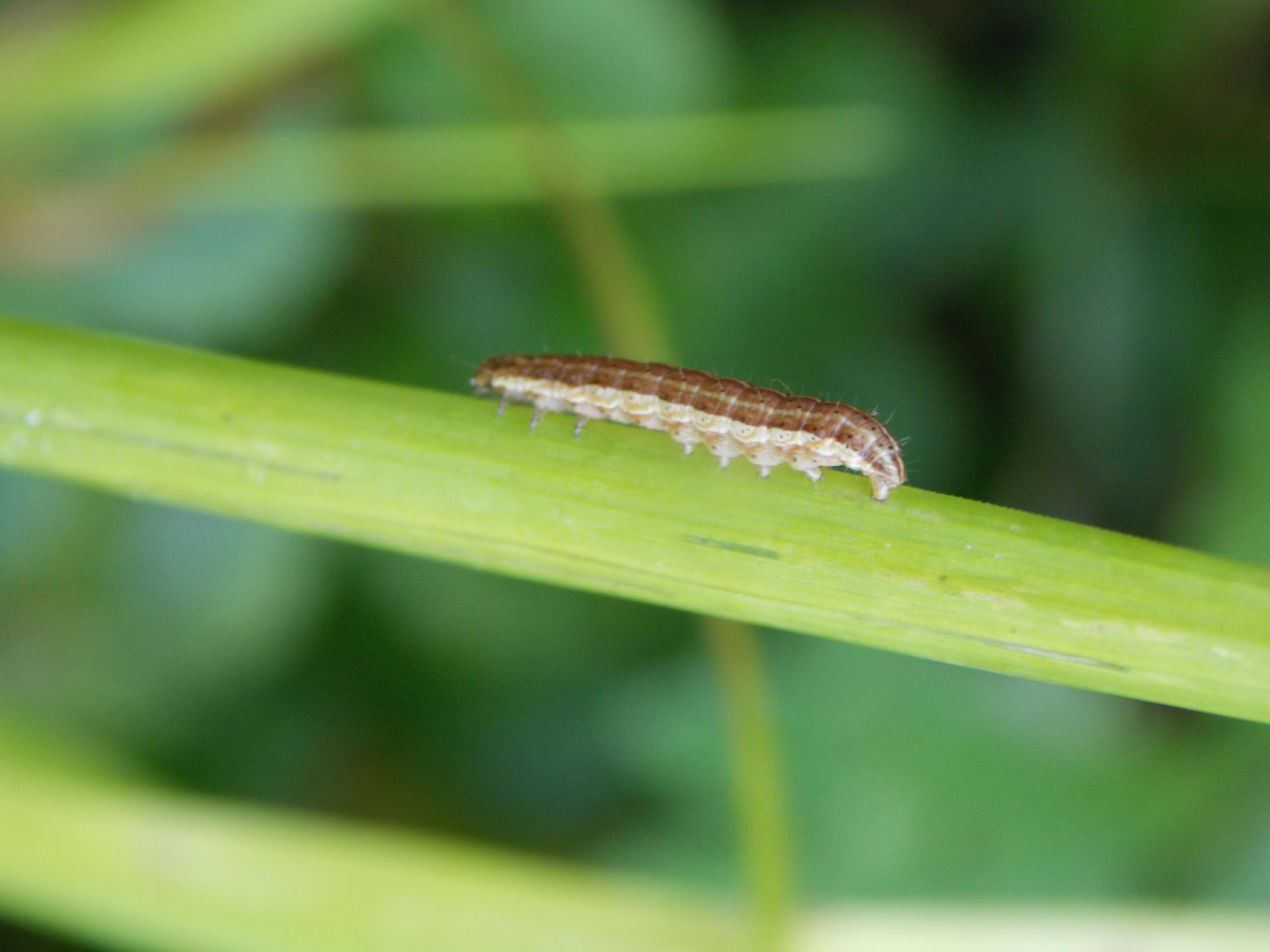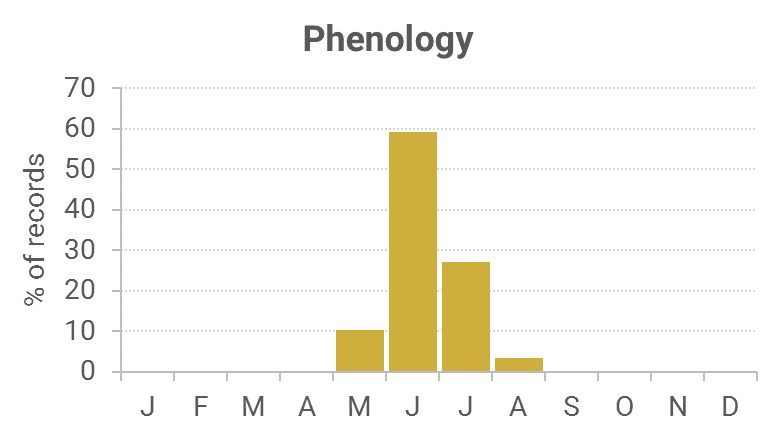Identification
Care needed to separate from other ‘brindles.’ Two distinct colour forms. In one, the forewing is light yellowish brown with two well-defined reddish-brown wedges projecting from the termen. The other form, f. combusta is plain reddish brown with indistinct markings.
Recording Method.
Attracted to light, also comes to sugar and flowers.
Life cycle
One generation. Overwinters as a larva near the ground, during August to April, pupating in a loose cell among the roots of the foodplant.
Larval foodplants
Larvae feed on various grasses.
Habitat
Grassland, open woodland, wetland and gardens.
History
Lennon (1863) had found it common everywhere around the Dumfries area. Douglas Robinson (1870-71) during the season had found only one at sugar in July on Almorness (VC73). Gordon (1913) found it abundant and generally distributed around Wigtownshire, although it was very variable in colour. Earliest date was 4th June 1911. Sir Arthur Duncan (1909-84) during his lifetime had found it at Closeburn, Tynron and Castlehill, Dumfries (all VC72). Archibald Russell (1944) listed it as occurring near Gatehouse of Fleet (VC73) during the years 1942-43.
During 1974-90 it was trapped at all seven Rothamsted stations but only with small numbers of records. From 1981 to 1984 it was trapped regularly on the Hensol Estate. Kirkton and Durisdeer (VC72) and Cally Woods, Old Torr and Mersehead RSPB (VC73) provided a lot of records during 1992-2010, with many sites also contributing as well, proving it a widespread and common species.
Form combusta Haworth
First record was of a specimen that occurred in June, 1897 at Corsemalzie (VC74) by the Gordon brothers. It has since been regularly recorded since 1997.

